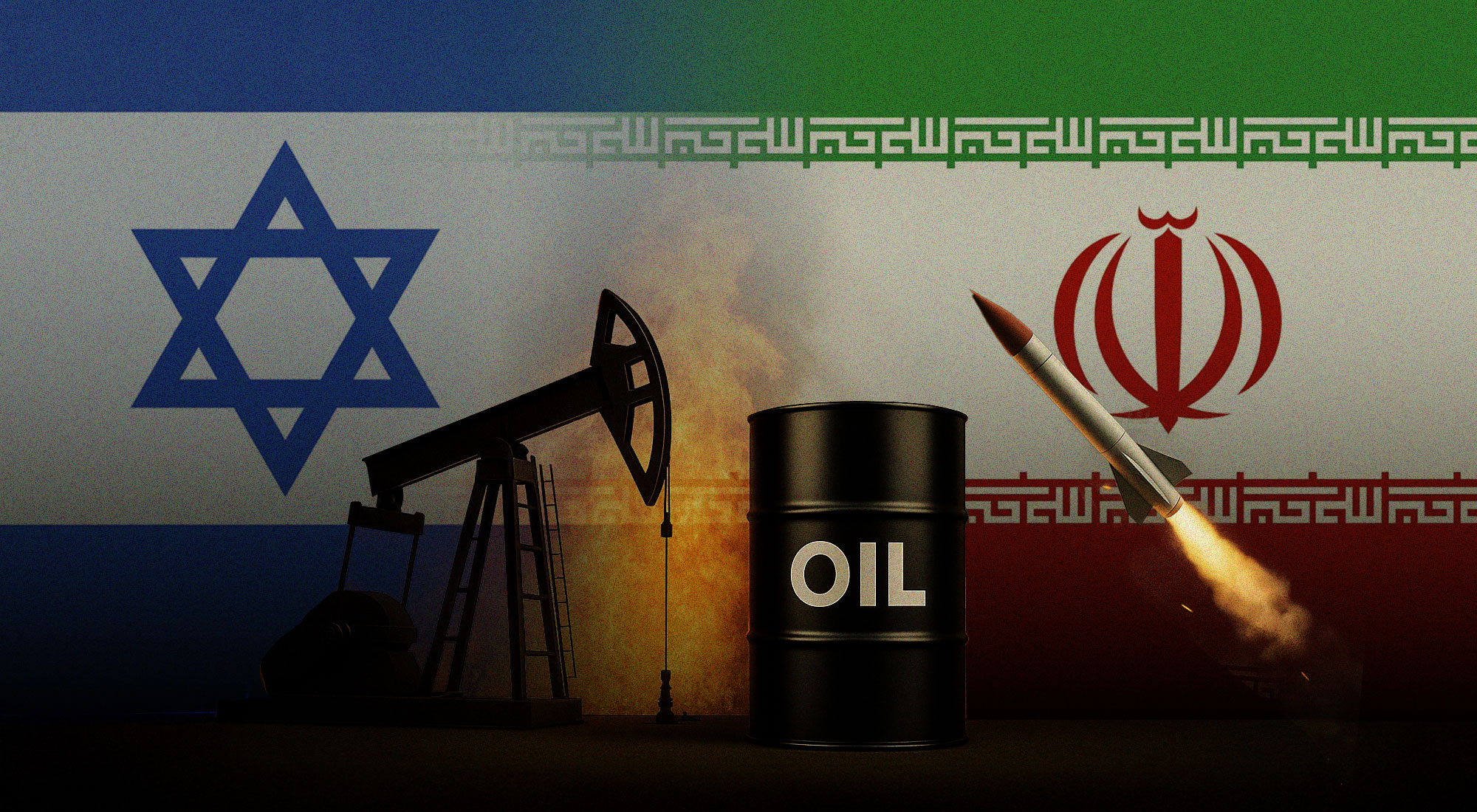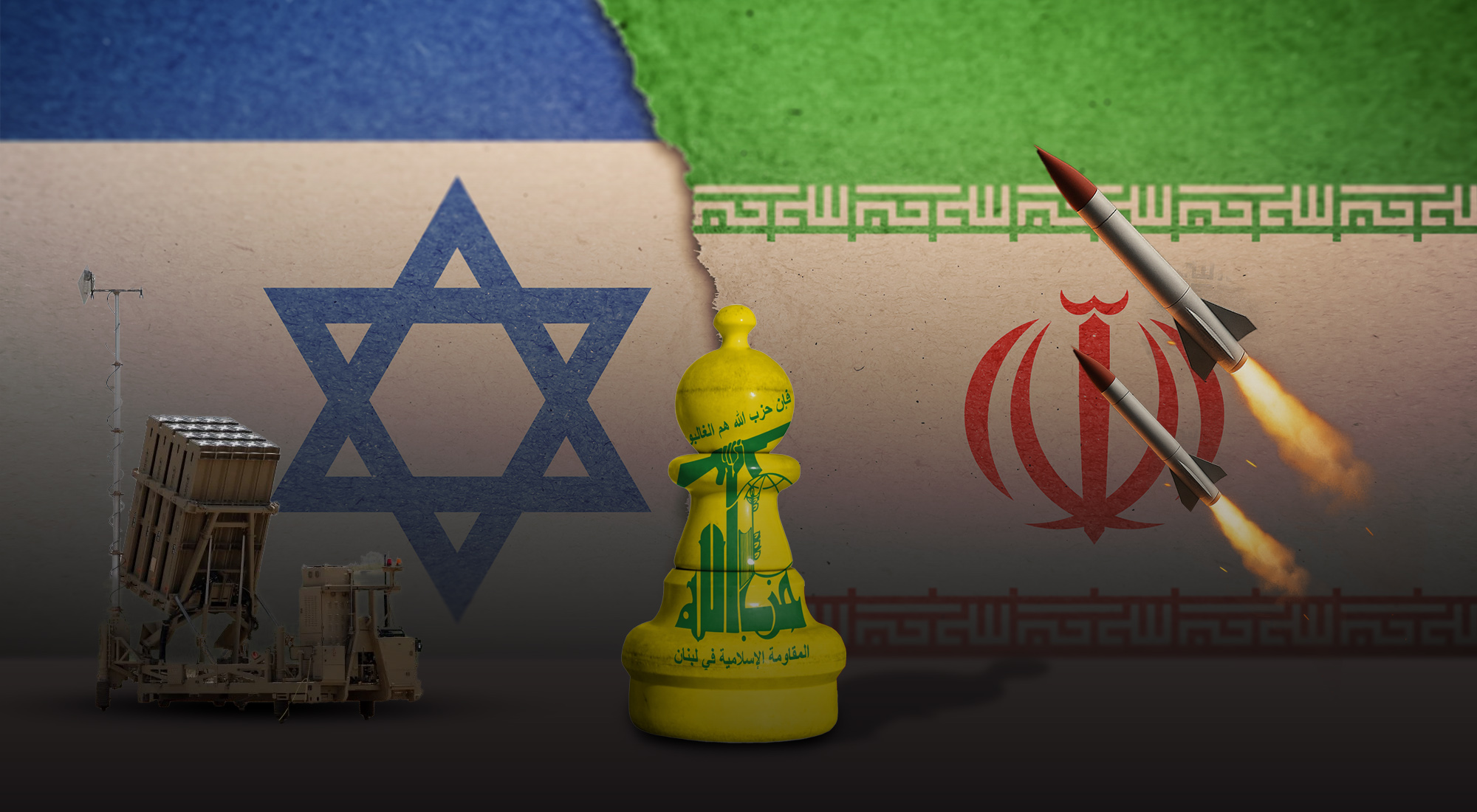In the past few years, the development of hypersonic weapons has become the object of intense speculation as evidenced by the numerous publications in newspapers and think tank publications around the world. The underlying assumption is that, when deployed on the battlefield, hypersonic weapons would constitute a game changer for military strategies, and by extension for international stability: given their speed, those projectiles would render current air and missile defense systems irrelevant. It would subsequently challenge the balance of power, be it at the global level between countries like the US, China, and Russia, or at the regional level if countries like North Korea and Iran acquired them.
However, a closer look at the current state of hypersonic weapon programs reveals a more nuanced assessment. There is definitely an operational value to these new technologies, but it comes along with technical challenges that are yet to be solved. It means that, less than a game changer, the introduction of hypersonic weapons may act more like a threat multiplier in adding new difficulties for defensive strategies. At the moment, this is mostly a competition among three major powers, namely the US, China, and Russia, but given the growing interest of middle and regional actors for these weapons, the Middle East could be affected by a new wave of proliferation by the beginning of 2030.
Operational significance of hypersonic weapons
The first, and possibly most important, characteristic of hypersonic weapons is their speed. The term “hypersonic” designates a vehicle moving at the speed of at least Mach 5 (meaning five times the speed of sound or approximately 6000 km/h). There is however confusion in the public about the novelty of this hypersonic parameter. Ballistic missiles already fly at hypersonic speed during their re-entry phase. For instance, when it reaches its target, a ballistic missile can go as high as Mach 23.[1] However, cruise missiles[2] fly at a much lower speed, qualifying as subsonic or at best supersonic (between Mach 0.7 and Mach 3).
The real innovation here comes from the fact that the new hypersonic weapons under development would not follow the ballistic trajectory. Instead, they would fly at the surface of the earth and maintain its hypersonic speed through most of the flight. There are currently two specific systems being developed to that purpose: a hypersonic glide vehicle (the most advanced type as of today) and a hypersonic cruise missile. The first type designates a projectile launched by a rocket into space but then, instead of following the extra-atmospheric trajectory at mid-course (like most ballistic missiles would do), it is released and “glides” in the upper atmosphere. Meanwhile, hypersonic cruise missiles are an upgraded version of current cruise missiles using advanced jet engines such as scramjet or ramjet for its propulsion.
In both cases, the ultimate goal could be summarized as combining the advantages of ballistic and cruise missiles. This means enabling the weapon to be faster than a cruise missile, and at the same time, more maneuverable than a ballistic missile, and therefore less predictable in terms of trajectory. It is this combination of speed and maneuverability that would make the hypersonic weapon truly challenging for defensive systems.
Figure 1: Hypersonic ballistic, boost-glide and cruise missile flight paths

Because a hypersonic weapon would not follow a ballistic trajectory and could maneuver to conceal their target, it would make the task of calculating and predicting its path more difficult for radars. Meanwhile, the speed adds a challenge at the decision-making level by reducing the time window during which governments can decide to respond to an attack. In this scenario, the launching of a hypersonic weapon would leave a very short time for early warning (a matter of minutes depending on the distance between the attacker and defender). It could then force governments to anticipate and transfer direct responsibility to the military commanders – a decision that obviously creates other issues regarding civil-military relations in times of crisis.
At the operational level, this suggests a strong advantage given to the offensive: in a first salvo of hypersonic weapons, the attacker could destroy the military and civilian infrastructures of another country without air and missile defense systems being able to prevent it. This is also the reason why some strategists fear that using hypersonic weapons as delivery systems for nuclear warheads could eventually challenge the current logic of deterrence between the nuclear powers, either at the global level (between the US, China, and Russia), or in a regional competition (between India and Pakistan). Furthermore, the fact that civilian decision-makers may have to leave the response to the attack in the hands of the military commanders also implies greater risk of miscalculation and escalation by accident.[3]
However, there are two reasons to remain cautious about the scope of the revolution brought about by hypersonic weapons. First, the technology involved in their development is not yet fully mature. According to scientists, there are still significant uncertainties about the exact ability of these weapons to combine speed and maneuverability. For instance, the heat caused by the hypersonic speed within the atmosphere ionizes the air and forms a plasma which creates technical challenges regarding the thermal protection and the guidance of the vehicle itself.[4] Addressing technological issues associated with hypersonic weapons still requires costly experimenting and testing, which explains why for the moment only a few countries can – or are willing to – afford it.
Second, one should not assume that the introduction of hypersonic weapons means the end of a world in which countries were able to perfectly defend themselves against missiles and rockets. In fact, hypersonic weapons only follow an old rule of military strategy: that offensive technologies always find a way to bypass defensive means. Today, the use of rockets and missiles in the Middle East already demonstrates the limitations of missile defense. Whether in the case of Hamas firing rockets at Israel or the Houthis combining missiles and drones against the UAE and Saudi Arabia, we see that, even with the most advanced systems on earth such as Iron Dome, Patriot or THAAD batteries, the defense of a territory is never fully guaranteed.[5]
For sure, the deployment and employment of hypersonic weapons would demand the upgrading of current defensive systems or the design of new ones able to address the new technical challenges. But it does not fundamentally change the way states – and possibly in the future non-state actors – fight each other. This is why it is more accurate to talk of hypersonic weapons as a threat multiplier rather than a game changer.
A race among major powers
The technological competition in the field of hypersonic weapons has been primarily a race between the US, Russia, and China. Public details on these programs remain limited and there are significant uncertainties on the exact progress made by these countries. Both the US and Russia started investing in hypersonic technologies a long time ago. In fact, the USSR worked on a hypersonic weapon program Meteorit as soon as the 1970s.
But these efforts grew in earnest in the early 2000s after the US administration of George W. Bush withdrew from the Anti-Ballistic Missile Treaty. Washington subsequently launched its Conventional Prompt Global Strike program, before refocusing resources on the two types of systems previously mentioned (hypersonic glide vehicles and hypersonic cruise missiles).
Russia has been the most vocal country in the domain. President Putin described in 2018 the arsenal as “invulnerable to US defenses” and claimed a year later the country’s primacy in the domain.[6] That same year, Russia announced that it was now deploying a missile regiment armed with hypersonic weapons. It reportedly used hypersonic missiles several times in Ukraine since the war started in February 2022.[7]
Three main Russian programs have been documented. The first is the Avangard, a hypersonic glide vehicle launched from an ICBM flying at Mach 20 and which could potentially be designed to be armed with nuclear warheads. The second is the 3M22 Tsirkon, a ship-launched hypersonic cruise missile expected to enter service in 2023. The third is the Kinzhal (“Dagger”), which has been declared operational since 2018 and consists of an air-launched ballistic missile that can reach Mach 10. Despite Russia’s assertiveness in the domain, foreign experts remain cautious on the effectiveness of its inventory and see the upbeat rhetoric of the Kremlin as a way to instill the perception of a “missile gap” in Washington.[8]
China may have been more discreet than Russia, but it did invest significant resources too in the domain. In 2018, a former official from the US Department of Defense said that China had “conducted 20 times as many hypersonic tests as the United States.”[9] Specifically, Beijing conducted several tests of the D-17, a medium-range ballistic missile designed to launch a hypersonic glide vehicle and capable of flying between 1800 and 2500 kilometers. It has also modified the DF-41, an ICBM,[10] to make it able to carry an HGV.
Whereas both Russia and China appear to develop hypersonic weapons that could be equipped with a nuclear warhead, the US has officially only looked at conventional capabilities so far. As mentioned earlier, its program originated from the Conventional Prompt Global Strike program that was meant to provide the US Armed Forces with a new long-range, stand-off fire option. An undisclosed number of potential hypersonic weapons is currently being developed by the US Navy, the US Army, and the US Air Force, while DARPA (the Pentagon’s Defense Advanced Research Projects Agency) is also working on concepts such as a “tactical boost glide” capability and a hypersonic air-breathing weapon. The US Missile Defense Agency is also exploring various concepts of sensors and interceptors able to detect and engage with hypersonic weapons, but these technologies are unlikely to be fielded before the second half of this decade.[11]
Although Russia, China, and the US have concentrated most of the resources allocated to hypersonic weapons, several middle powers have also financed their own programs. The list includes countries like Australia, India, France, Germany, and Japan. Noticeably, both India and France cooperated with Russia on hypersonic technology. India has been developing the BrahMos II, a hypersonic cruise missile that has been delayed several times and is now expected to enter service around 2028. Meanwhile, France is developing a hypersonic air-to-surface ASN4G missile that will likely integrate the air component of its nuclear deterrence capabilities.
Proliferation risks in the Middle East
As of today, there is no country deploying or known to develop hypersonic weapons in the Middle East, but there has been suspicion that both Israel and Iran might be investing resources in small programs.[12] Both have hypersonic wind tunnel facilities that would allow them to test technologies on their own, but as yet there is no reliable source suggesting that either Tehran or Jerusalem embarked on a program of the scale of countries like India or France. This does not mean that the Middle East will be immune to the hypersonic phenomenon, but rather that it is still a process in its early stage.
The history of proliferation in the Middle East, be it of ballistic missiles, nuclear technology, or drones, teaches us that states in the region eventually find a way to access these capabilities as the production increases and the international diffusion of new technology accelerates. In 2018, when asked about the scenario of Iran and North Korea acquiring hypersonic weapons, Lieutenant Samuel Greaves, then director of the US Missile Defense Agency, simply answered “I assess that risk as extremely high. I don’t see what will prevent it from happening.”[13]
At the moment, Israel and Iran might find it technically challenging or financially unaffordable to engage in hypersonic programs. But in coming years, they may benefit from cooperation with external partners: Iran could get access to the technology via Russia and/or China, while Israel would do so through cooperation with the US.
As elsewhere, the introduction of hypersonic weapons in the Middle East would not be a game changer, but it would certainly aggravate current security trends. One can safely assume that the acquisition of hypersonic missiles by the Iranian regime – and most probably by the Islamic Revolutionary Guard Corps – would complement the country’s asymmetric strategy in the Gulf, a strategy dubbed “forward defense” for the past decade.[14] Tehran would likely see hypersonic weapons as a way to reinforce its assertive posture in the Strait of Hormuz and just like it did with its ballistic missiles, it might contemplate their deployment on the occupied islands like Abu Musa and the Greater and Lesser Tunbs. In the longer term, Iran’s possession of such capability would also raise concerns over the hypothetical transfer of its arsenal to proxies in the Middle East, such as Hezbollah in Lebanon and the Houthis in Yemen.
For Israel and the Gulf States, the unfolding of this scenario would have critical consequences as the efficiency of their missile defense systems would be severely diminished. One way to offset this trend might be to cooperate with the US on its ongoing hypersonic missile defense programs. In fact, Israel is already engaged in such cooperation for the development of its next-generation Arrow 4 interceptor that should be able to address the threat from hypersonic weapons.[15] But it is not impossible that this would also beget further proliferation; since hypersonic technology increases the advantage of the attacker, countries in the region may be more tempted in procuring offensive, rather than defensive, capabilities.
Is non-proliferation of hypersonic weapons doomed to fail?
In such a perspective, experts have already called on major powers to address the risks of hypersonic missile proliferation.[16] Given the resources the US, Russia and China have already invested in this technology, it is not realistic to hope for the interdiction of these weapons: it is now a fact of life that they will enter service, at least among the major powers. But diplomatic and technical measures should be taken to prevent smaller countries from accessing them. This might help avert a new cascade of proliferation in the Middle East.
However, if Washington, Beijing, and Moscow objectively share an interest in blocking the ambitions of potential proliferators, such negotiations would be far from easy. The non-proliferation regime has been in shambles for the past few years. In 2019, under the Trump presidency, the US withdrew from the Intermediate-Range Nuclear Forces Treaty. The New START Treaty – signed in 2011 for a ten-year period – was extended at the last minute for an additional 5 years without any indication of a new arms control agreement. Given the tensions between the US and Russia since the war in Ukraine, it seems today unlikely to see both sides coming to such an agreement. Added to that, the Middle East has hardly been a good case study for non-proliferation. None of the countries in the region joined the Missile Technology Control Regime and only three (Iraq, Jordan, and Libya) signed the Hague Code of Conduct Against Ballistic Missile Proliferation. Realistically, this does not bode well for a new non-proliferation initiative including hypersonic weapons, but as mentioned above, the alternative is the exacerbation of current security threats.
References
[1] Joseph Henrotin, “Armes hypersoniques: quels enjeux pour les armées,” French Institute for International Relations (IFRI), 18 June, 2021, https://www.ifri.org/fr/publications/briefings-de-lifri/armes-hypersoniques-enjeux-armees.
[2] While a ballistic missile is propelled by a rocket, a cruise missile is propelled by a jet engine and remains therefore within the atmosphere.
[3] Dean Wilkening, “Hypersonic Weapons and Strategic Stability,” Survival 61, no.5 (2019), pp.129-148, DOI: 10.1080/00396338.2019.1662125.
[4] Ivan Oelrich, “Cool Your Jets: Some Perspective on the Hyping of Hypersonic Weapons,” Bulletin of the Atomic Scientists 76, no.1 (2020), pp.37-45, DOI:10.1080/00963402.2019.1701283.
[5] Jean-Loup Samaan, “Beyond the Houthi Attack on Abu Dhabi: How to Address the Drone & Missile Threat to Civilian Areas?” Trends Research & Advisory, 25 January, 2022, https://trendsresearch.org/insight/beyond-the-houthi-attack-on-abu-dhabi-how-to-address-the-drone-missile-threat-to-civilian-areas/.
[6] Vladimir Isachenkov, “Putin Says Russia Is Leading World in Hypersonic Weapons,” Associated Press, 25 December, 2019, https://apnews.com/article/vladimir-putin-ap-top-news-international-news-technology-russia-d4e05956217d895594bcef491083e950.
[7] “What Are the ‘Hypersonic’ Missiles Russia Says It Used in Ukraine?” The Economist, 22 March, 2022, https://www.economist.com/the-economist-explains/2022/03/22/what-are-the-hypersonic-missiles-russia-says-it-used-in-ukraine.
[8] Justin Williamson and James J. Wirtz, “Hypersonic or Just Hype? Assessing the Russian Hypersonic Weapons Program,” Comparative Strategy 40, no.5 (2021), pp.468-481, DOI: 10.1080/01495933.2021.1962198.
[9] Kelley Sayler, “Hypersonic Weapons: Background and Issues for Congress,” Congressional Research Service, accessed 17 March, 2022, p.17, https://sgp.fas.org/crs/weapons/R45811.pdf.
[10] An ICBM, or Intercontinental Ballistic Missile, designates a missile able to reach a target at a distance of more than 5000 kilometers.
[11] For an overview of the US program based on publicly available data, see Sayler, op. cit., pp.4-12.
[12] Richard H. Speier, George Nacouzi, Carrie A. Lee, and Richard M. Moore, Hypersonic Missile Nonproliferation: Hindering the Spread of a New Class of Weapons (Santa Monica: Rand Corporation, 2017), pp.76-78, https://www.rand.org/pubs/research_reports/RR2137.html.
[13] Zachary Keck, “Iran and North Korea: Soon to Build Hypersonic Missiles?” The National Interest, 15 September, 2019, https://nationalinterest.org/blog/buzz/iran-and-north-korea-soon-build-hypersonic-missiles-80836.
[14] Amr Yossef, “Military Doctrines in Israel and Iran: A Doctrinal Hybridity,” The Middle East Journal 75, no.2 (Summer 2021), pp.243-263, muse.jhu.edu/article/800102.
[15] Sebastien Roblin, “Israel and U.S. to Develop New Arrow 4 Missile to Defeat Hypersonic Weapons,” The National Interest, 7 September, 2021, https://nationalinterest.org/blog/buzz/israel-and-us-develop-new-arrow-4-missile-defeat-hypersonic-weapons-192669.
[16] Richard H. Speier, George Nacouzi, Carrie A. Lee, and Richard M. Moore, op. cit.
Figure 1: Dean Wilkening, “Hypersonic Weapons and Strategic Stability”, Survival 61, no.5 (2019), p.130







